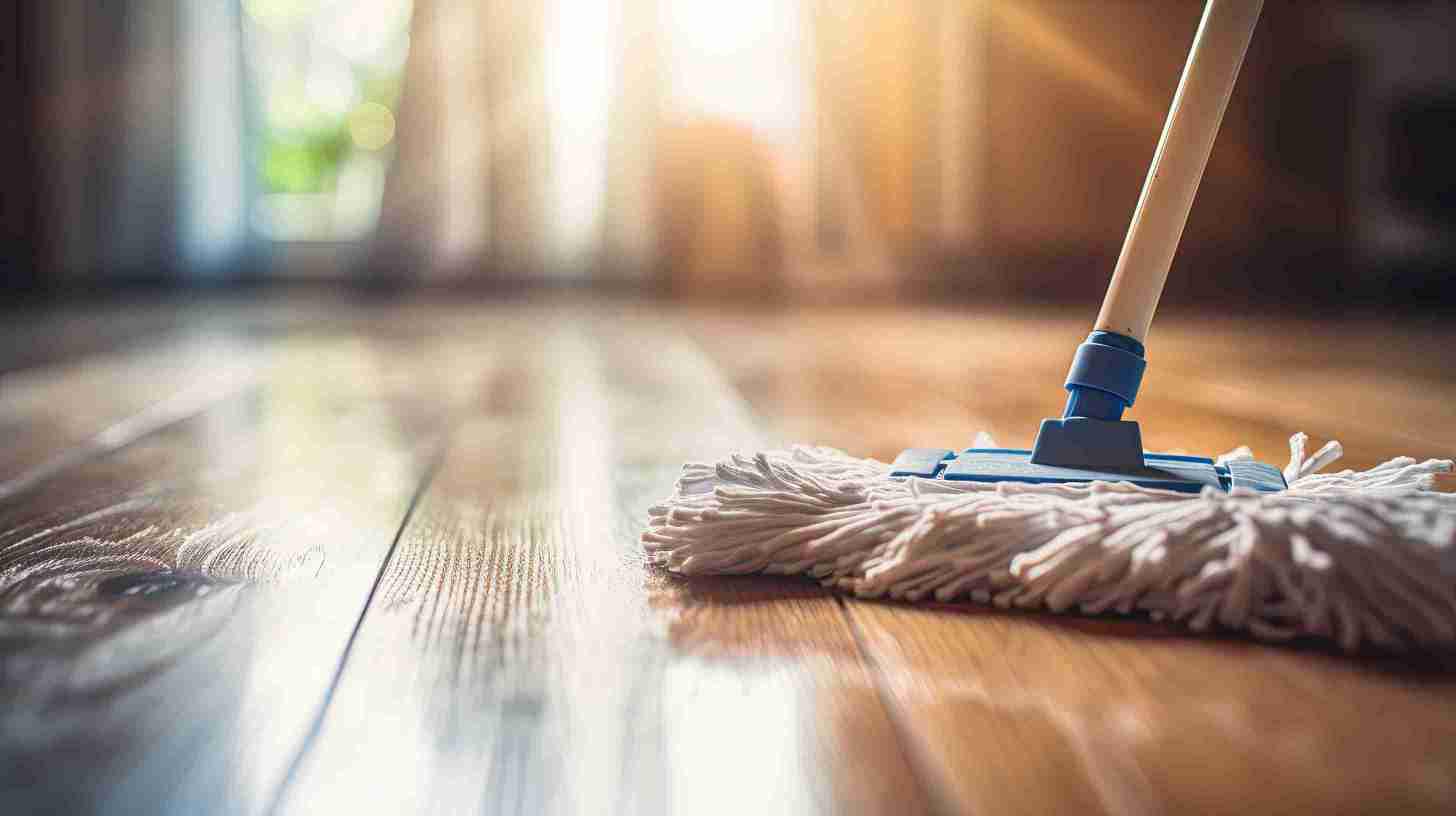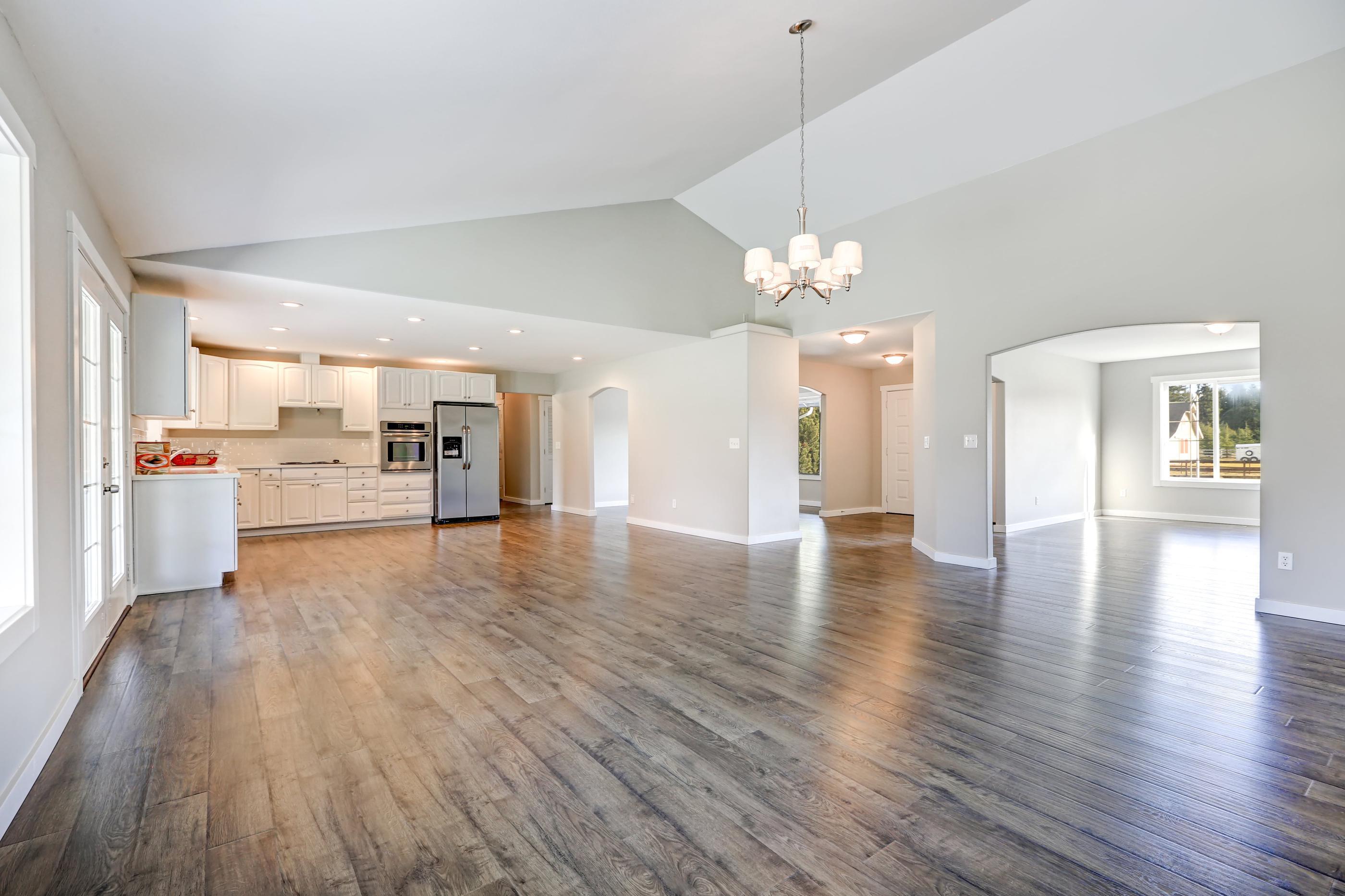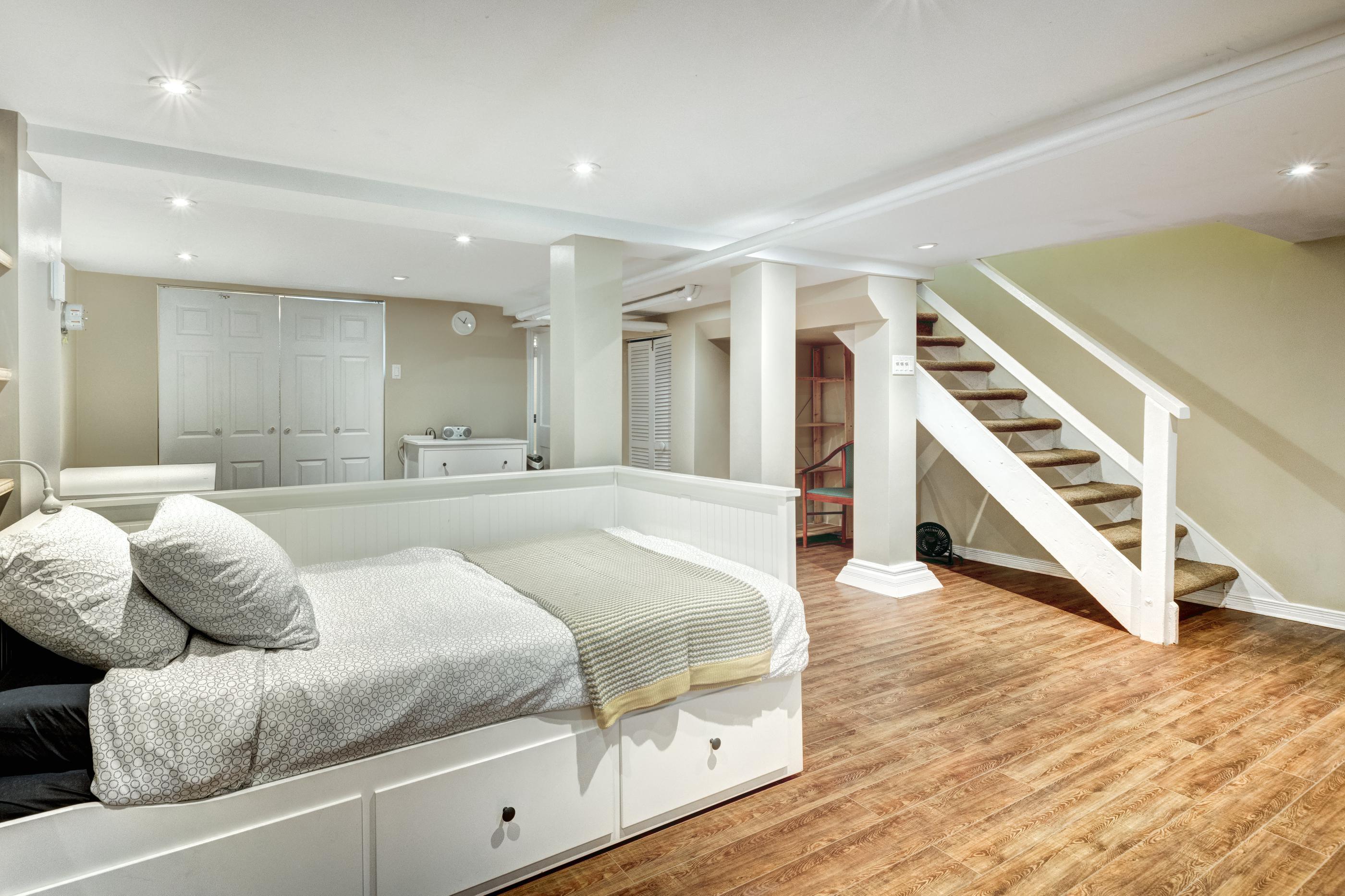Hardwood floors bring warmth and elegance to any space but require proper care to maintain their beauty. In this blog post, we’ll learn how to protect hardwood floors from scratches, furniture damage, pets, and construction hazards. Plus, we’ll delve into effective cleaning methods to keep your floors looking pristine.
How to Protect Hardwood Floors
To protect your hardwood floor, it’s important to identify factors that can cause damage and implement strategies to minimize it, such as avoiding impacts and scratches and applying protective measures. The following tips will help you properly protect and clean your hardwood floors:
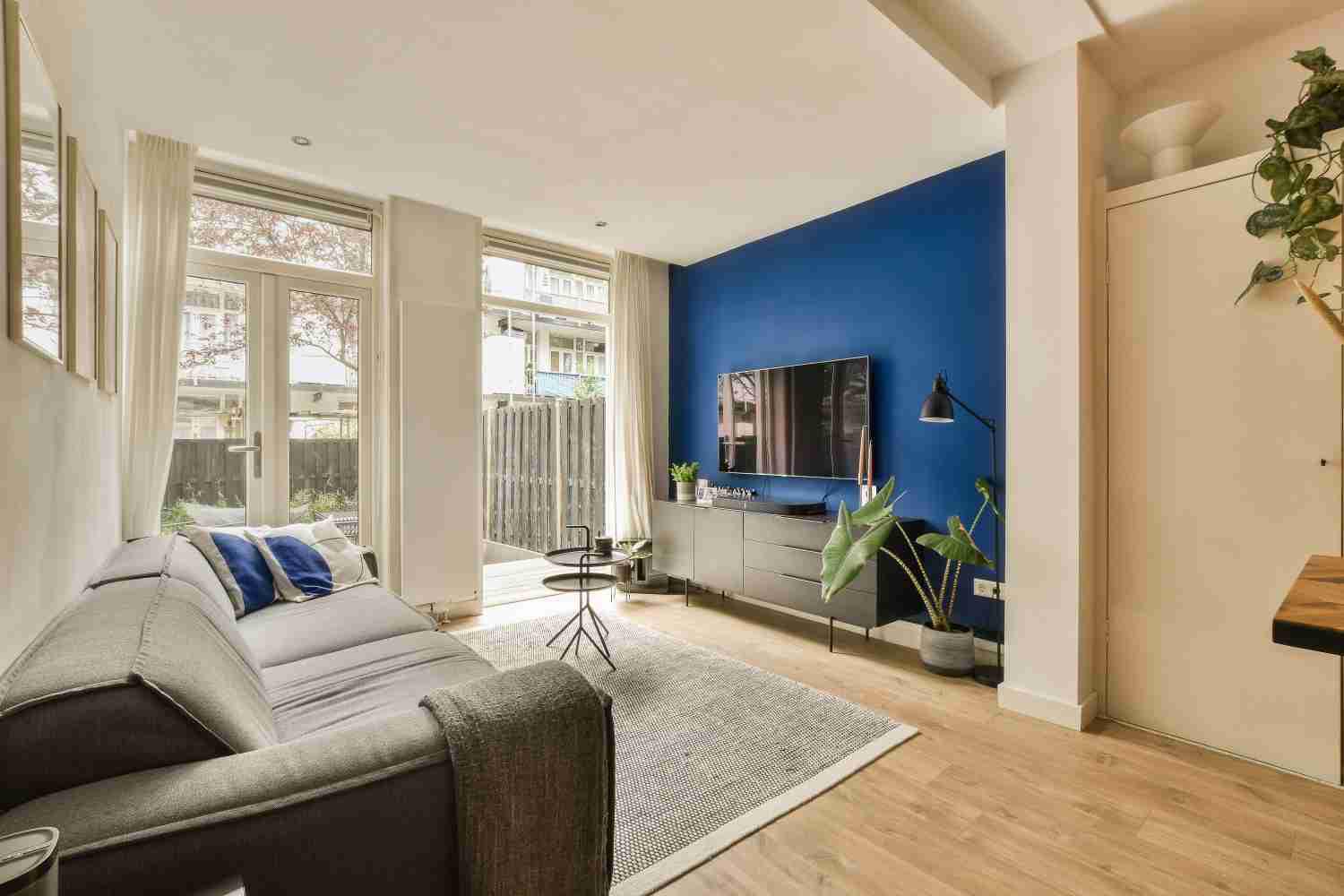
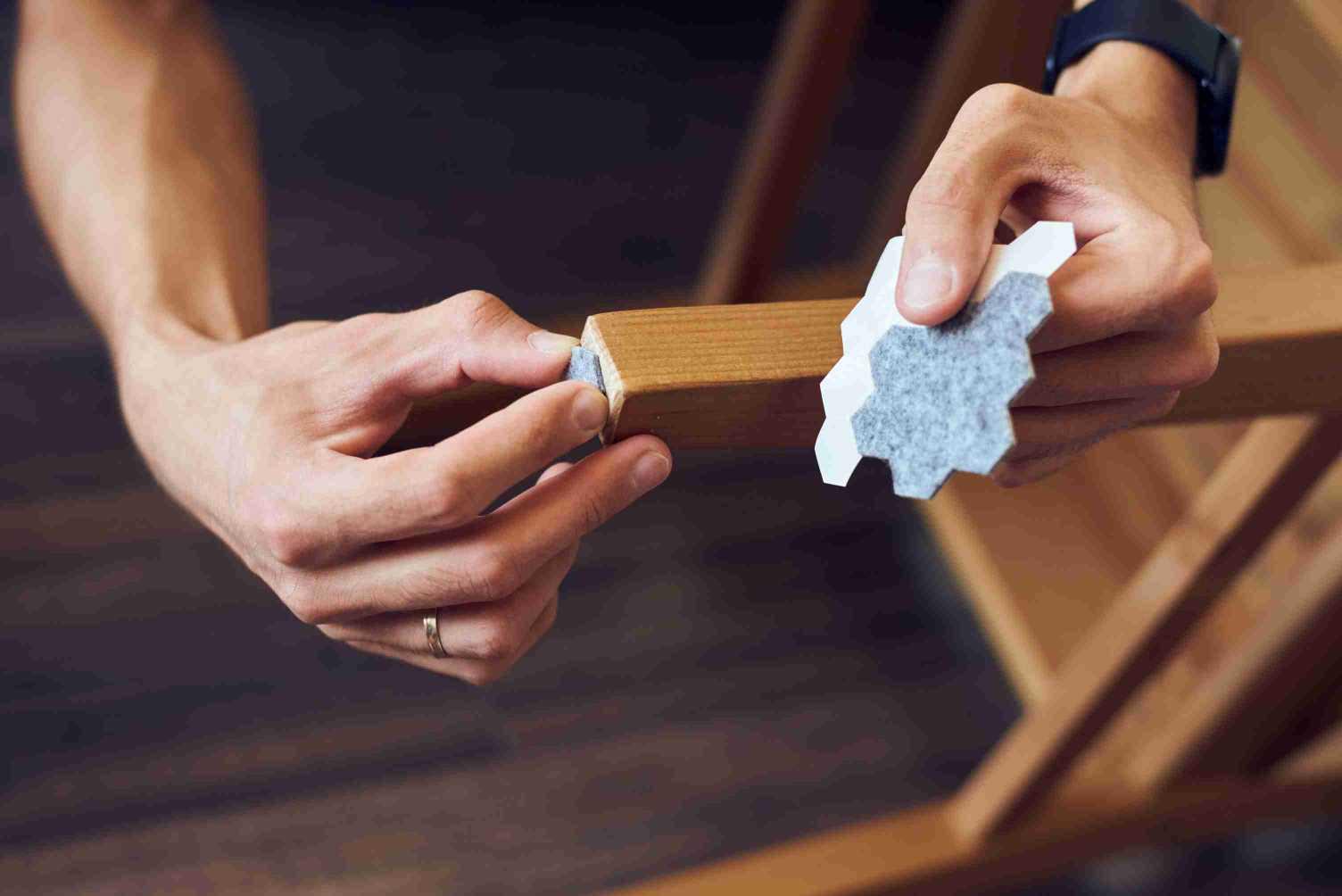
- Choosing high-quality wood: Investing in durable, scratch-resistant wood like oak, maple, hickory, walnut, or Brazilian cherry can ensure your floors last longer and are more water-resistant. Additionally, selecting a reputable flooring service is crucial to ensure proper installation, which can further enhance the longevity and performance of your hardwood floors.
- Protect floors from kids’ play: Adding playmats and foam titles is a great way to designate a play area for your kids that protects the floors. Accidents are bound to happen, so washable crayons and markers are necessary.
- Minimize impact from footwear: If you can avoid wearing high-heeled shoes indoors, you will minimize impact on your hardwood floors.
- Quickly clean up spills: Acting fast to wipe away spilled liquids will help you prevent damage, especially from standing water.
- Maintain proper indoor humidity: Keeping indoor humidity levels between 30% and 50% will prevent wood shrinkage or swelling. Check out this article to learn different ways to control humidity in the kitchen.
- Protect from sun damage: You can install curtains or blinds to block UV rays or apply tinting films to windows. Consider using floor finishes with UV-blocking properties.
- Mats and runners: Placing mats and runners in high-traffic areas is a great way to protect the floor from wear and tear.
- Furniture protectors: Attaching protectors to the legs of furniture will help prevent scratches and dents on the floor surface.
How to Clean Hardwood Floors
Proper cleaning is essential for extending your hardwood floors’ lifespan and keeping them in good condition. Choosing the right products and avoiding excessive liquid contact with the floor is crucial. Check out the following ideas for correctly cleaning hardwood floors:
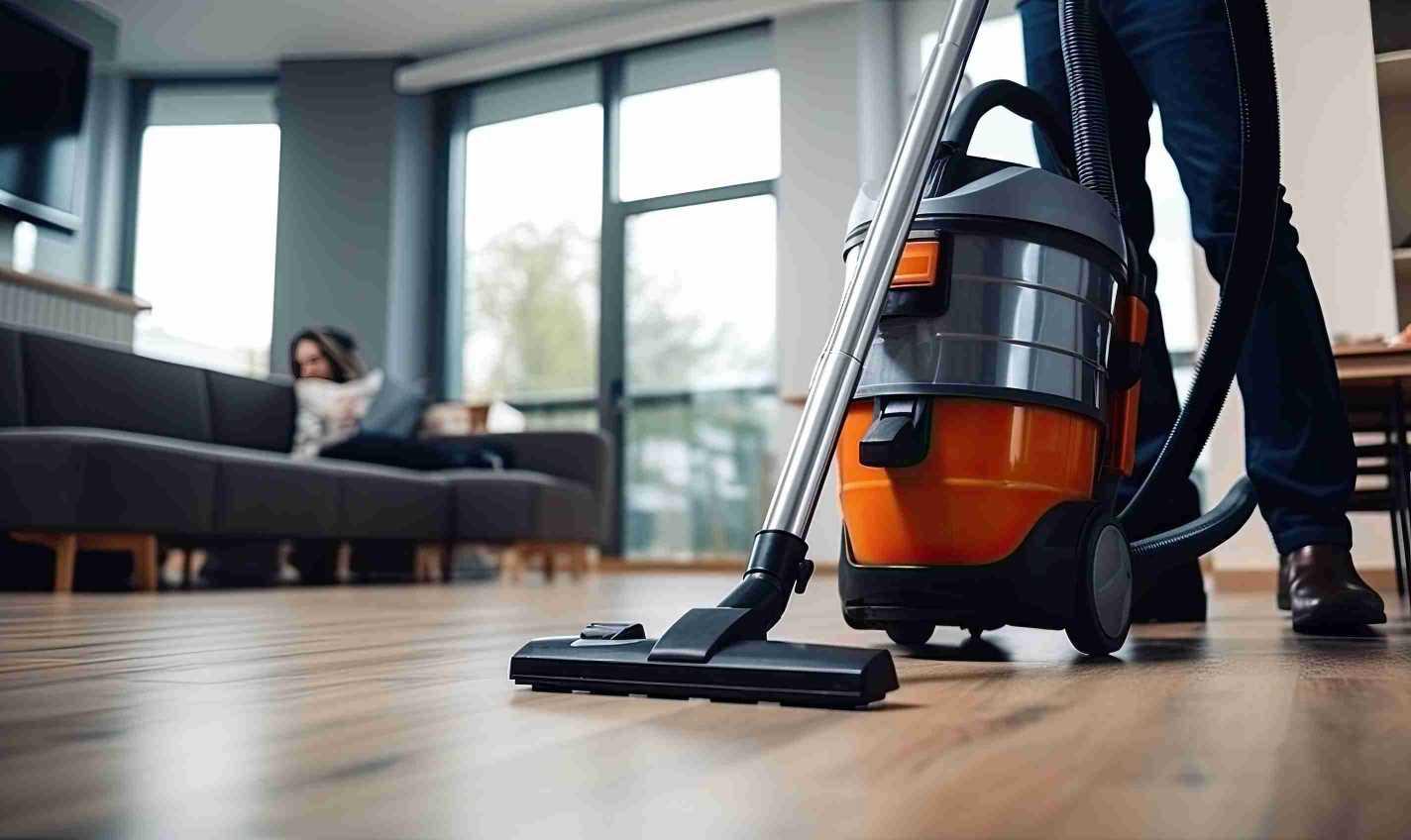
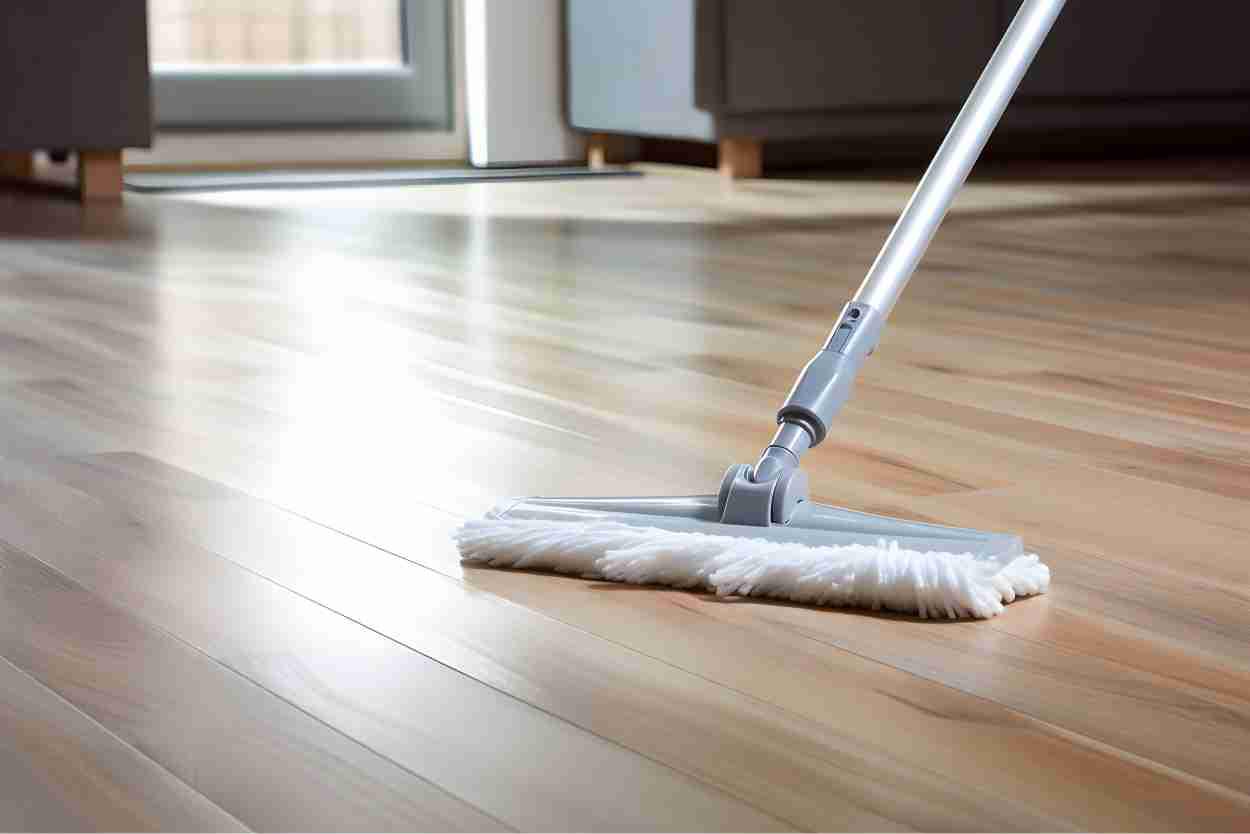
- Use a damp mop: Only use a damp mop that has been thoroughly wrung out. The use of excessive water is not recommended on the hardwood floors.
- Daily sweeping: Cleaning your floors daily with a soft-bristled broom and dustpan to remove dust and debris is a great way to prevent abrasive particles from dulling the floor’s topcoat.
- Weekly vacuuming: If you use a vacuum, choose one specifically designed for hard flooring and do it weekly to avoid dirt or particle accumulation.
- Choosing the right cleaning products: If you use liquids, make sure they are formulated for hardwood floors. In particular, ensure that none of your products contain harsh chemicals such as chlorine bleach, ammonia, undiluted vinegar, or pine oil, as they can seriously damage floor finishes.
- Be cautious with steam cleaning: Even steam-cleaning hardwood floors can be damaging. Using steam cleaners cautiously and following the manufacturer’s instructions carefully is important.
- Monitor swiffer-type mops: If using swiffer-type mops and cleaning products, dispersing the cleaning liquid in very small squirts is a good way to minimize damage to the hardwood floors.
- Shoes-out policy: Consider encouraging a shoes-out policy to keep debris and dirt from being tracked onto the hardwood floors.
- Know your floor finish: Take the time to determine the type of finish on your hardwood floors. Different finishes may require different cleaning methods, so it’s important to learn what works best for your floors.
How to Protect Hardwood Floors from Dogs
To ensure the longevity and beauty of your hardwood floors while living with pets, it’s important to take proactive measures. You can employ several strategies to protect hardwood floors from dogs. Consider these tips:
- Choose a hardwood floor with a durable factory finish to enhance its resistance to scratches and stains.
- Trim and file your dog’s nails regularly to minimize scratches on the floor’s surface.
- Place area rugs in high-traffic areas and where your dog spends most of its time to provide an extra layer of protection.
- Clean up any stains or spills promptly to prevent them from seeping into the wood and causing damage.
- Opt for light-colored wood floors with a low sheen, as they can conceal pet hair and scratches more effectively than darker, high-gloss floors.
How to Protect Hardwood Floors From Furniture
Taking special care and preventive measures will help you protect hardwood floors from furniture. Heavy furniture, whether moved frequently or left in place for extended periods, can threaten the integrity of your floors. Follow these tips to ensure the proper care and protection for the potential damage caused by furniture:
- Move furniture appropriately: Avoid dragging, dropping, hauling, or pushing furniture across the floor, as these actions can cause scratches and dents.
- Install furniture pads: Utilize furniture pads on furniture legs made from felt or a combination of rubber and felt to provide cushioning and protection against scratches. Self-adhesive pads are convenient, but remember to monitor them regularly and replace them when necessary.
- Rolling chairs protection: Placing a plastic mat underneath rolling chairs is a great way to prevent them from causing damage. For a more visually appealing solution, consider using a rug to brighten your workspace while offering protection.
- Carpets and rugs: Carpets and rugs add aesthetic appeal to your space and provide excellent protection for wood flooring. Some types of rugs are perfect for hardwood flooring, and you can arrange them strategically under coffee tables, chairs, and beds. Be cautious with rubber-backed rugs, which may discolor or mark the floors over time.
How to Protect Hardwood Floors in the Kitchen
To ensure your hardwood floors in the kitchen remain in optimal condition for years to come, it’s crucial to address the key factors that can cause damage in this space of the house:
- Moisture
- Dirt, dust, and food crumbs
- Heat
Moisture
Water and excessive moisture pose a significant threat to hardwood floors, particularly in the kitchen, where leaky dishwashers and kitchen sink splashes are common. We recommend choosing hardwood floors that have been pre-sealed before installation, as they provide better protection against potential damage from kitchen spills and leaks. Even with these pre-sealed wood floors, be cautious to prevent pooled water from sitting for prolonged periods.
Dirt, dust, and food crumbs
Regular cleaning is essential to prevent dirt, dust, and food crumbs from accumulating on your hardwood floors. Hidden dirt under tables and sinks can lead to further abrasion, while damp food crumbs may promote mold, fungus, and mildew growth if left unchecked.
Heat
Wood floors are sensitive to temperature and humidity changes, so it’s essential to avoid excessive heat and steam in the kitchen. Consider installing engineered hardwood instead of solid wood, as it doesn’t expand as much with temperature changes. As heat rises and steam fills the kitchen, the floorboards may expand slightly and contract when the temperature returns to normal.
How to Protect Hardwood Floors During Construction
Preserving the beauty of hardwood floors during construction requires careful attention to detail. By implementing thoughtful measures, you can shield your floors from damage and ensure they remain pristine. Let’s explore how these strategies can help you protect hardwood floors during construction:
Temporary floor coverings
Temporary coverings such as floor cardboard, construction paper, or adhesive floor protection film are a great way to protect your hardwood floors during construction. If using non-adhesive coverings, we recommend securing them in place with painter’s tape.
Determine walking routes
Establishing clear walking routes for the construction team will help minimize foot traffic and potential damage to the floors. This way, you will guide the movement of equipment and materials inside and outside the house, reducing the risk of accidents.
Cleaning and ventilation
Maintaining a clean and well-ventilated work environment prevents dust, debris, and moisture from accumulating on the hardwood floors. Regular cleaning and proper ventilation will help minimize the impact of construction activities on the floors’ condition.
How to Protect Hardwood Floors from Scratches
Scratches on hardwood floors can diminish the appeal of your space. Consider the following solutions to help you protect your hardwood floors from scratches, keeping them looking their best for longer:
- Use felt pads or furniture protectors under furniture legs to prevent scratching.
- Avoid dragging heavy objects across the floor.
- Keep pet nails trimmed to minimize scratches.
- Place rugs or mats in high-traffic areas to provide extra protection.
- Clean floors regularly to remove dirt and debris that can cause scratches.
Preserve Your Hardwood Floors for Longer
Keeping your hardwood floors safe and looking great is all about being proactive and careful. From using items like furniture pads and rugs to cleaning regularly with the right products, every little step will help. Remember to consider factors such as the type of wood and entrust the installation process to professionals.
If you’re considering installing hardwood floors or have questions about the installation process, be sure to check out our article on Hardwood Floor Installation Time and Expectations for valuable insights into what to expect during this process.
Finally, think about your lifestyle, especially if you have kids or pets, the shoes you wear, and even how you can make your floors look nice. By paying attention to these things and taking good care of your floors, you can enjoy their beauty for a long time.

